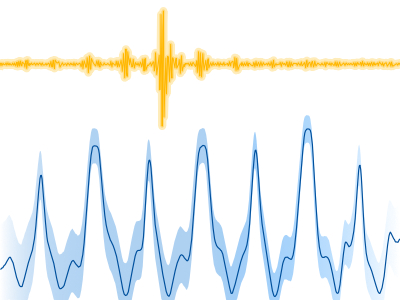Dual combs for fast and broadband spectroscopy
Dual-combs with high 1 GHz pulse-repetition rate permit fast optical spectroscopy (here up to 200'000 spectra per second) over a wide spectral span. Potential applications include observing fast chemcial or biological processes in real-time as well as high-throughput screening.

Dual-frequency comb spectroscopy permits broadband precision spectroscopic measurements with short acquisition time. It is based on the interference of two pulse trains with slightly different repeition rate, effectively recreating the interferogram signal one would obtain from a Fourier-transform spectrometer but witihout moving parts. The maximal acquisition rate as well as the spectral span of a dual-comb spectrometer can be dramatically improved when laser with a higher repetition rate are used. With 1 GHz mature, digitally-controlled, low-noise mode-locked lasers a 600 GHz wide spectrum of gas absorption lines can be recorded in only 5 μs (i.e. 200'000 spectra per second). The same laser system reaches sub-Hz level mutual coherence generates opportunities for broadband spectrala coverage over 100s of THz in bandwidth (albeit at a lower acquisition rate). Importantly, the system can operate in conjunction low-bandwidth photo-detectors mid-infrared, imaging or photo-acoustic detectors.
Reference:
1-GHz dual-comb spectrometer with high mutual coherence for fast and broadband measurements; Thibault Voumard, John Darvill, Thibault Wildi, Markus Ludwig, Christian Mohr, Ingmar Hartl, Tobias Herr; Optics Letters, 2022; DOI: 10.1364/OL.448575